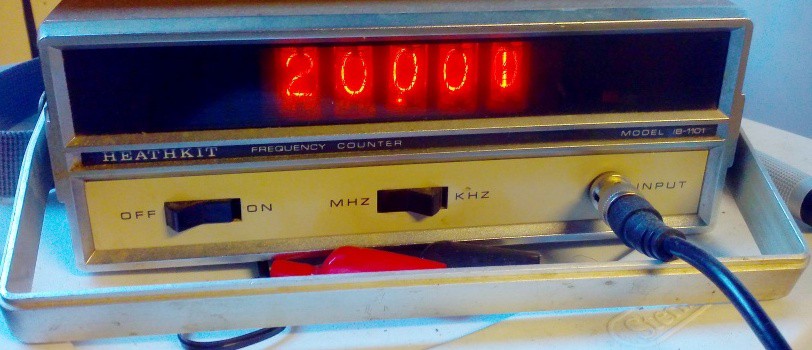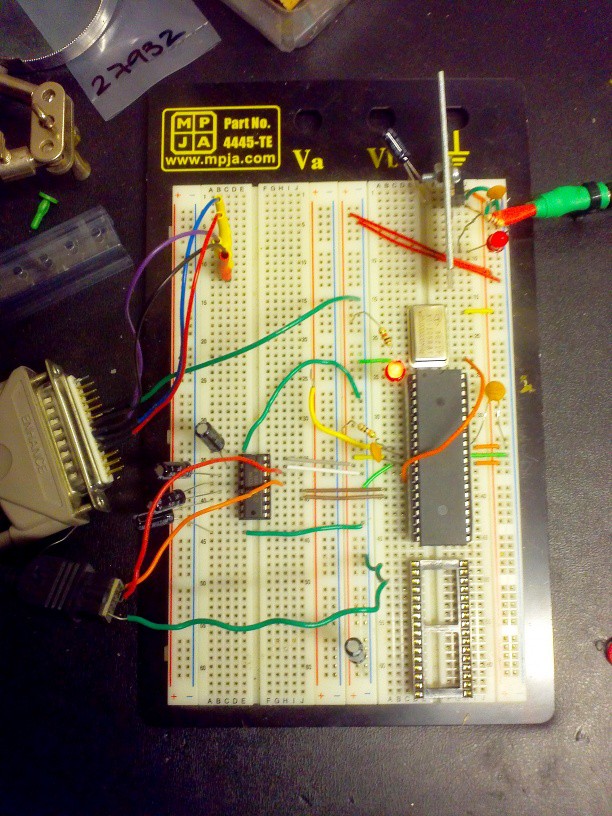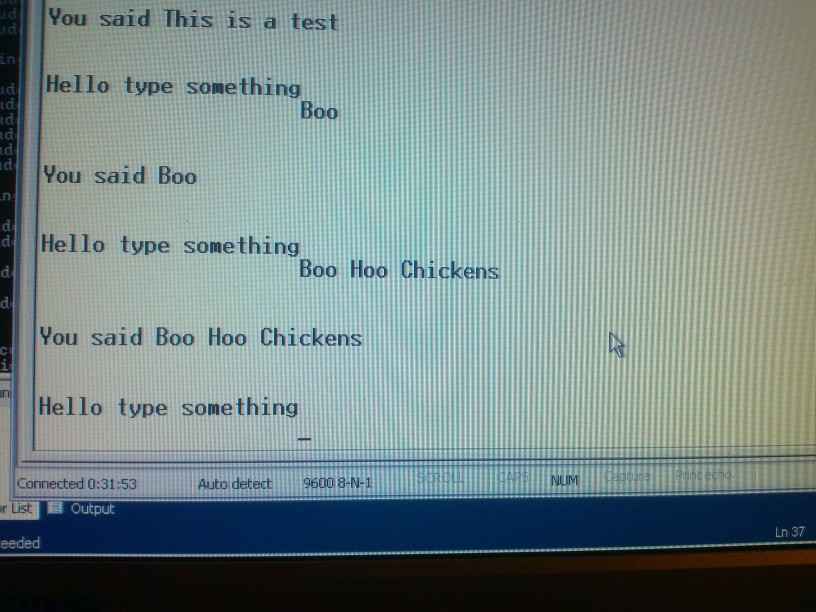USPS package tracking: belmont-> san francisco->oakland->emeryville->oakland->emeryville->oakland
I live in oakland. The mail truck is driving in circles!
----
Well, I have 64k of flash, 4 k of ram and 1mhz 8 bit cpu... blinking an LED.
No dev board kit or arduino babyware, just a raw microcontroller on a protoboard with a self-built programming cable. Next up, 20 mhz external oscillator, and an rs232 port. Actually the max232 chip has 4 level converters in it, so why not, I'll give this 8 bit machine com1 and com2, in an age where you're lucky if your new computer accepts a usb to comm adapter without windows barfing error messages at you.
----
It seems to be working. 20 mhz 8-bit Atmel AVR with 64k flash, 4K sram, currently single rs232 port. The empty socket is where the 128K sram will go. One instruction per clock vs the 6502's 2 clocks per instruction, making this 22 times faster than a 1.8 Mhz Nintendo.

This old Heathkit frequency I got from ebay is proving useful.

Breadboard:
- Starting from the top right:
- 7805 voltage regulator w/ scrap metal heat sink
- silver can: 20 Mhz crystal oscillator
- Big black chip: AVR Atmega-644
- Empty socket: Placeholder for SRAM
- Left: Max-232 w/ charge pump capacitors
- Far left: Dsub-25 connector that connects to the parallel port of an old PC. When connected to the AVR, the program avrdude, will send a new program over SPI. The 4 wires from the parallel port connect to a header; this head is plugged into port B of the AVR on the breadboard prior to programming. After programming, I plug the header into an unused section of the breadboard to keep it from flopping around.

A simple serial test program running over Hyperterminal.
 Mars
Mars
Discussions
Become a Hackaday.io Member
Create an account to leave a comment. Already have an account? Log In.